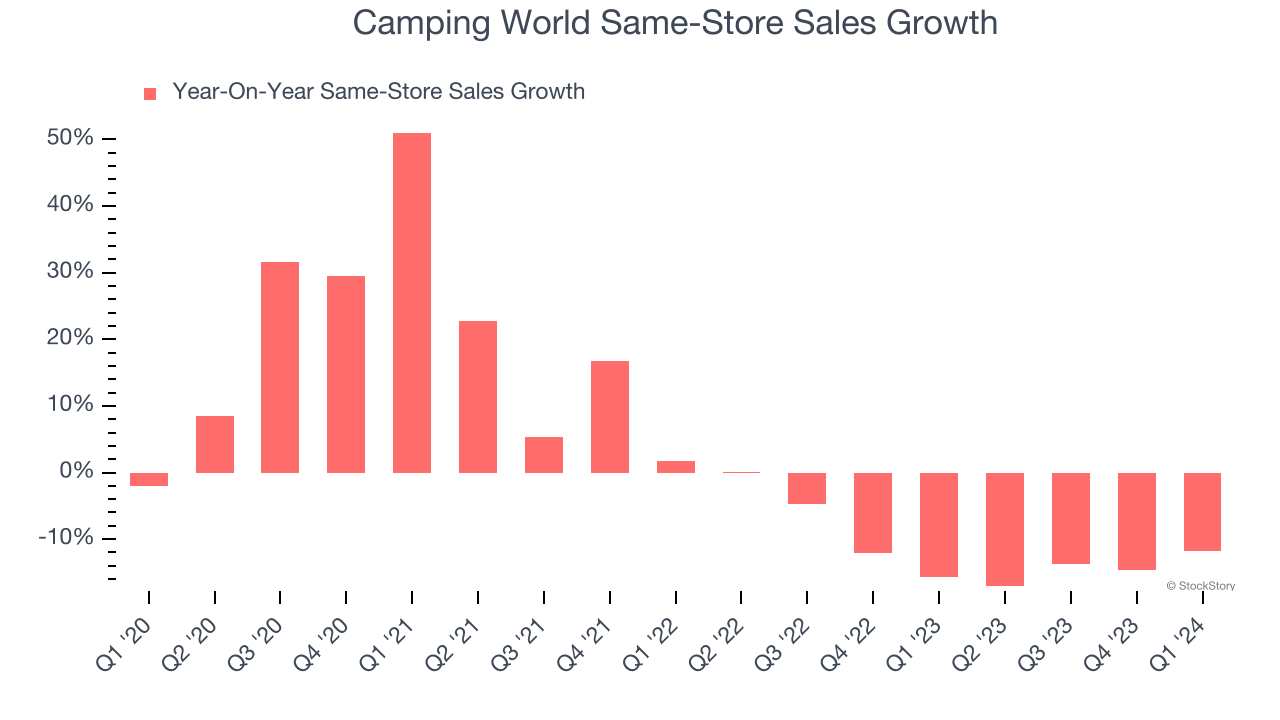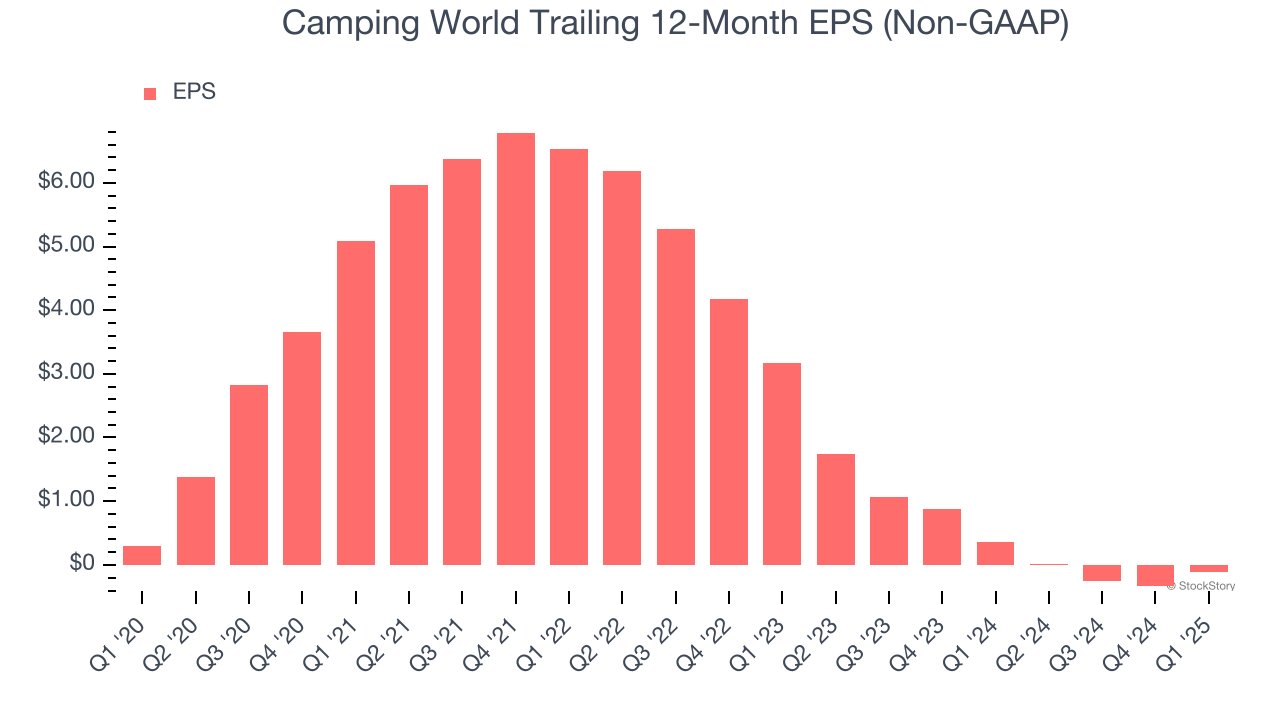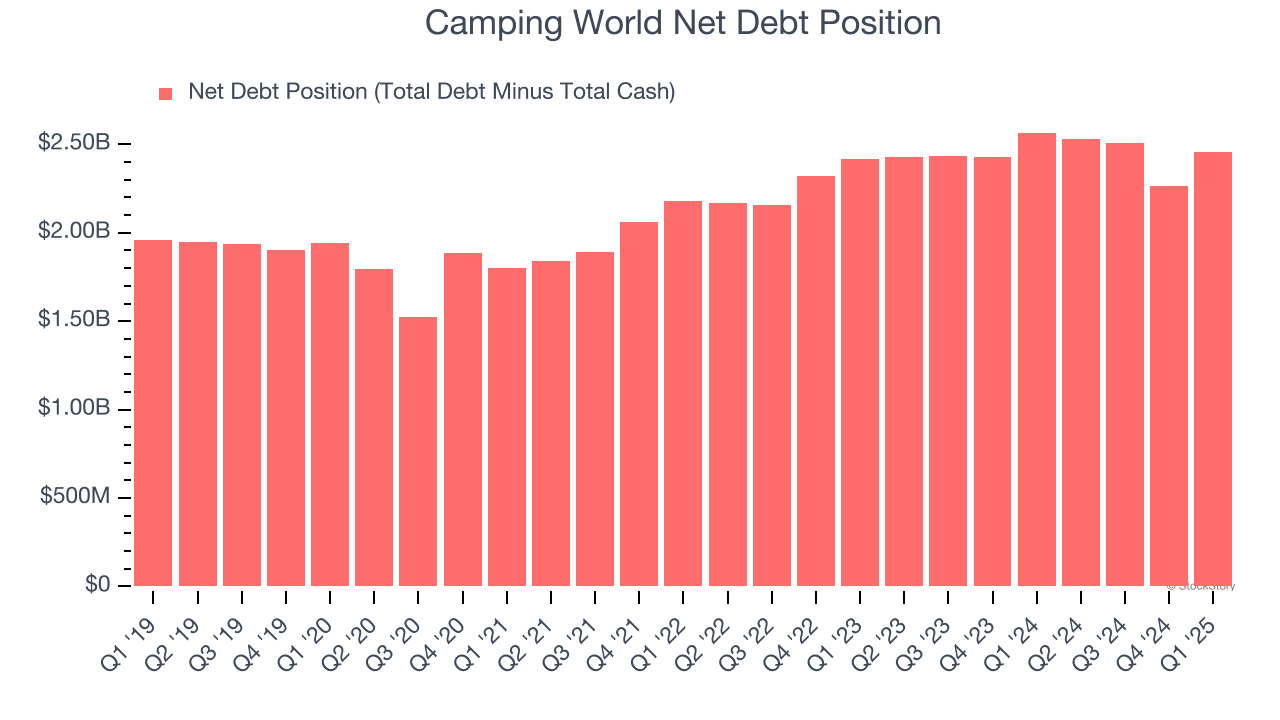
Camping World has gotten torched over the last six months - since November 2024, its stock price has dropped 31.2% to $16.62 per share. This might have investors contemplating their next move.
Is there a buying opportunity in Camping World, or does it present a risk to your portfolio? Check out our in-depth research report to see what our analysts have to say, it’s free.
Why Is Camping World Not Exciting?
Despite the more favorable entry price, we don't have much confidence in Camping World. Here are three reasons why CWH doesn't excite us and a stock we'd rather own.
1. Shrinking Same-Store Sales Indicate Waning Demand
Same-store sales show the change in sales for a retailer's e-commerce platform and brick-and-mortar shops that have existed for at least a year. This is a key performance indicator because it measures organic growth.
Camping World’s demand has been shrinking over the last two years as its same-store sales have averaged 14.3% annual declines.
Note that Camping World reports its same-store sales intermittently, so some data points are missing in the chart below.

2. EPS Trending Down
Analyzing the long-term change in earnings per share (EPS) shows whether a company's incremental sales were profitable – for example, revenue could be inflated through excessive spending on advertising and promotions.
Camping World’s full-year EPS turned negative over the last five years. In a mature sector such as consumer retail, we tend to steer our readers away from companies with falling EPS because it could imply changing secular trends and preferences. If the tide turns unexpectedly, Camping World’s low margin of safety could leave its stock price susceptible to large downswings.

3. Short Cash Runway Exposes Shareholders to Potential Dilution
As long-term investors, the risk we care about most is the permanent loss of capital, which can happen when a company goes bankrupt or raises money from a disadvantaged position. This is separate from short-term stock price volatility, something we are much less bothered by.
Camping World burned through $7.76 million of cash over the last year, and its $2.48 billion of debt exceeds the $20.92 million of cash on its balance sheet. This is a deal breaker for us because indebted loss-making companies spell trouble.

Unless the Camping World’s fundamentals change quickly, it might find itself in a position where it must raise capital from investors to continue operating. Whether that would be favorable is unclear because dilution is a headwind for shareholder returns.
We remain cautious of Camping World until it generates consistent free cash flow or any of its announced financing plans materialize on its balance sheet.
Final Judgment
Camping World isn’t a terrible business, but it doesn’t pass our bar. After the recent drawdown, the stock trades at 17.2× forward P/E (or $16.62 per share). This multiple tells us a lot of good news is priced in - you can find better investment opportunities elsewhere. Let us point you toward one of Charlie Munger’s all-time favorite businesses.
Stocks We Would Buy Instead of Camping World
Donald Trump’s victory in the 2024 U.S. Presidential Election sent major indices to all-time highs, but stocks have retraced as investors debate the health of the economy and the potential impact of tariffs.
While this leaves much uncertainty around 2025, a few companies are poised for long-term gains regardless of the political or macroeconomic climate, like our Top 5 Growth Stocks for this month. This is a curated list of our High Quality stocks that have generated a market-beating return of 176% over the last five years.
Stocks that made our list in 2020 include now familiar names such as Nvidia (+1,545% between March 2020 and March 2025) as well as under-the-radar businesses like the once-micro-cap company Tecnoglass (+1,754% five-year return). Find your next big winner with StockStory today.
